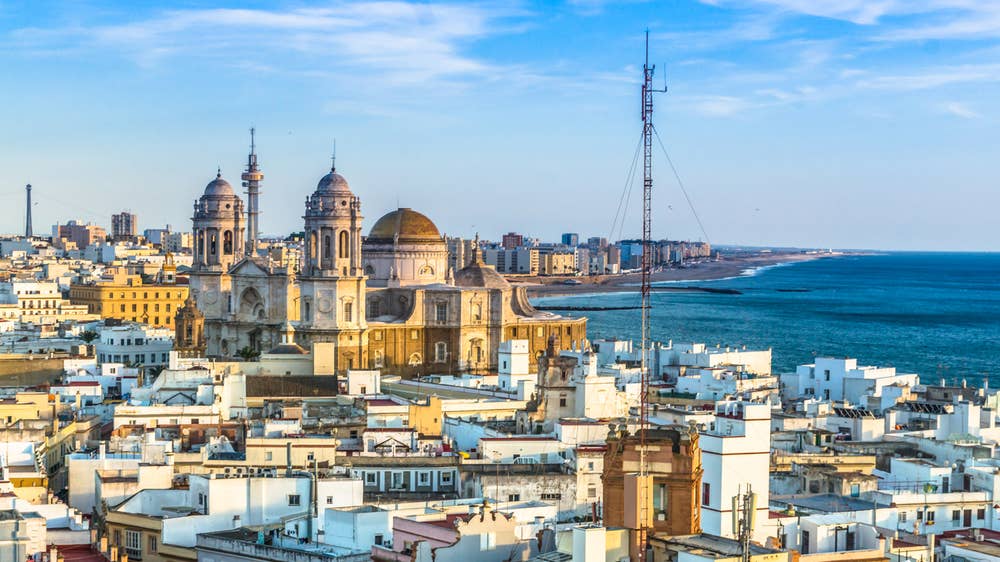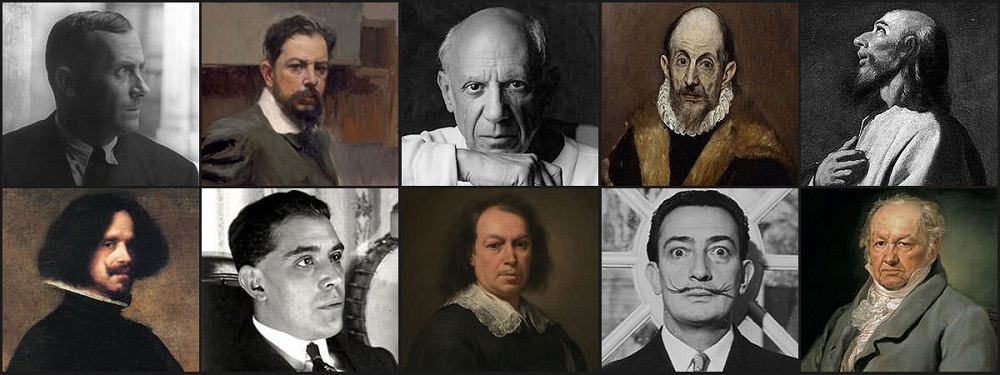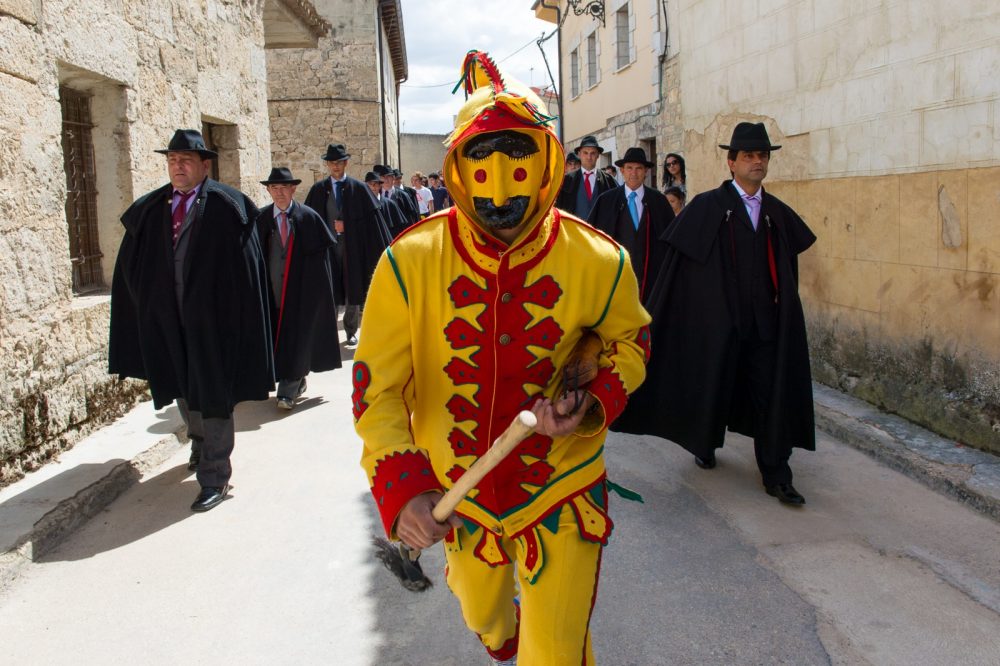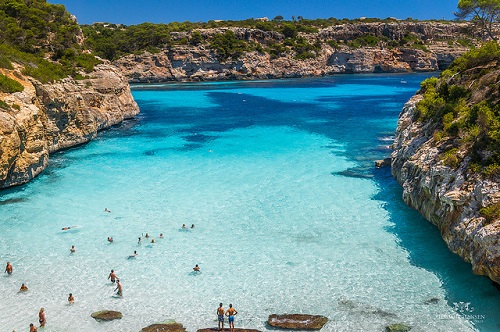Cádiz city is one of the charming Andalusian cities and most beautiful places to see; its long coastline, historical monuments, and white sandy beaches make it the ideal travel destination.
Planning your visit to this Mediterranean seaside city and surroundings with our list of the top attractions in Cádiz.
1- Castle of San Sebastián:
 via – ines
via – ines
San Sebastián castle located at the end of the panoramic causeway Paseo Fernando Quiñones. The impressive building dates back to 1706, but its first construction has Muslim origins. It’s such a fascinating monument and set in picturesque surroundings that it was chosen for some scenes of the Bond movie Die Another Day.
2- Gran Teatro Falla:
 via – queaprendemoshoy
via – queaprendemoshoy
Gran Teatro Falla is one of the city’s top landmarks that dates back to the 19th-century and located in the Plaza Fragela. The theatre built in the Neo-Mudéjar style, it is made of red brick, and its main façade has three grand horseshoe arch entry doorways, with alternating red and white voussoirs. One goes over these doors into a large hall, which was reconstructed in the 1920s. Stairways climb to the horseshoe or “U”-shaped galleries above. Also, the roof demonstrates an analogy of Paradise, the work of Felipe Abarzuza y Rodríguez de Arias.
Every February the theatre hosts the art competitions of the Carnival of Cádiz. During repairs and restoration from 1987 to 1991, those competitions were held instead at the now-defunct Teatro Andalucía. Through the rest of the year, the theatre organizes all manner of shows, such as plays or concerts.
3- Cádiz Cathedral:
 via – porsolea
via – porsolea
For another magnificent view, you can scale Cádiz cathedral. It took 116 years to complete, fabrication began in the Baroque style and was finished in the neoclassical style. So the mix of styles is evident. Besides, Trade between Spain and the Americas generated the funds to build this magnificent church during a golden age for the city. Admire the fuse of styles giving Cádiz Cathedral its strong character.
The church is known as the Cathedral Nueva (New Church) in contrast with the older Parish of Santa Cruz nearby. Besides, the first designer of the church called Vicente Acero, but he left the project and various other architects worked on it. Furthermore, the main façade has an interesting color palette of a dark brown lower half and a cream top. Inspect the intricacies of this exceptional frontage, with rococo and neoclassical elements on a baroque base look up at the yellow dome topping the cathedral.
Enter throughout the huge central portal and amuse the serene and extensive set of the tall nave. The golden decor that looks to illuminate the inside. Look up at the domed ceiling’s large central painting of angels surrounded by The Last Supper, the Crucifixion, and other works. The wooden choir is segregated with intricate figures. Additionally, delve into the attractive crypt and admire at its intricate ceiling pattern. Besides, climb a steep, spiraling ramp to the summit of the Torre de Poniente bell tower for sweeping views of Cádiz, its port and the sea.
4- Gadir Archaeological Site:
 via – spainisculture
via – spainisculture
The city of Gadir is one of the oldest Phoenician colonization in the West. The deficiency of architectural remains from Phoenician settlements through the Mediterranean makes the Gadir archaeological site a central spot for discovering the Phoenician’s ways of life and their culture.
The site is at the highest point of the ancient island of Erytheia, the smallest of the old archipelago belonging to Cádiz. The Archaeological Site is organized around various layouts corresponding to the different periods of invasion, and the street plan, houses, and utensils from the 9th century BC are worthy of note. A total of eight houses with two terraces remains, organized around two cobbled streets. Additionally, the archaeology museum on the ground floor exhibits magnificent glassware and jewelry, and a great collection of amphorae taken from the city’s historic port. The Fine Arts Museum on the second floor shows paintings from Rubens and Zurbaran among the others.
Therefore, it has become an important point of reference for the various interpretations of the possible location of the urban settlement of Gadir. It helps the visitors to discover how they lived or the distribution of the house. In the kitchen, the clay oven to make bread stands out, similar to the one that is still used in many Mediterranean and Eastern countries.
5- Roman Theatre:
 via – viator
via – viator
Cádiz’s Roman Theatre is an ancient landmark in Andalusia, in southern Spain. It dates back from the first century BC, was part of the urban dilatation of Gades. This was developed by the old Lucio Cornelio Balbo and his nephew Balbo “the Young.” Resulting from this project, Neapolis was built. It was a new neighborhood also supplied with an amphitheater.
The theatre was deserted four centuries later. Since then, it has been plundered. Used as a warehouse, block, and housing, it also served as a base for an Islamic fortress known in times of Alfonso X as the “Theatre Castle.”
The archaeological site shows only a part of the Roman Theatre of Cádiz. It is considered as the largest and the oldest theatres in the Iberian Peninsula. Besides, the theatre featured a cavea with a diameter of more than 120 meters and could hold some 10,000 spectators.
6- Cádiz Beaches:
 via – traveler
via – traveler
Attractive beaches and a warm Mediterranean climate make Cádiz the best seaside destination. Firstly, within the Old Town of Cádiz, the most famous beach is the Playa de la Caleta. It has a “Blue Flag” for its safe, ideal for swimming, calm waters, and wading also the Playa is surrounded by restaurants and snack bars.
Secondly, the city’s longest beach is the Playa de la Cortadura, which is well equipped with public facilities including changing rooms and showers as the playa de la Victoria. This one considered one of the best beaches in Spain with a large sandy beach.
Lastly, the Playa de Santa María del Mar is another wonderful beach. Include a long stretch of fine sandy shores in a more urbanized environment.
7- Torre Tavira:
 via – cadizprovincia365
via – cadizprovincia365
Cádiz is known for its large number of watchtowers. The Torre Tavira was used by Don Antonio Tavira to observe the incoming ships traveling back with goods from America. Furthermore, in the center of Cádiz, the Torre Tavira is the highest point in the Old Town. At 45 meters above sea level, the tower provides a magnificent view along the coastline and far out to the horizon in the Atlantic Ocean.
While visiting the Torre Tavira, tourists may enjoy two exhibition halls, the Camera Obscura, which affords 360-degree panoramic views of the city’s landmarks and the terrace from which they can see wonderful views of Cádiz.
The landmark holds a museum devoted to the history of Cádiz, with displays about trade in the 18th and 19th centuries, as well as a panel about the Spanish Constitution (La Pepa). The city takes pride that La Pepa was constructed here in 1812.
The Tavira Tower is the perfect spot to amuse beautiful panoramic views over the magnificent town and its coast. Thanks to the camera obscura located at the top of the tower.
8- Cádiz Museum:
 via – inspirock
via – inspirock
Cádiz Museum is famous for its collection of old artifacts and fine arts. On the ground floor, the archaeological section exhibits items found at a Phoenician necropolis site in Cádiz. The most renowned item of the archaeology collection is the Phoenician marble sarcophagus of the fifth century BC. Other Greek, Roman, Visigothic, and Arab antiquities round out the collection.
The museum’s fine arts collection displays paintings by Zurbarán, containing the Vision of St. Francis of Assisi, Ecstasy of St. Bruno and Pentecost. The collection also features Rubens’ Holy Family and the works of Murillo (Ecstasy of St. Francis and Ecce Homo), Ribera, Alonso Cano, van Eyck, and Rogier van der Weyden.
The top floor of the museum displays the traditional puppets used by the Tia Norica puppet company, which has been amusing children in Cádiz since the mid-18th century. The company’s puppet theatre performances are entertaining comedy sketches featuring adorable puppet characters.
9- Fiestas de Carnaval:
 via – playasenator
via – playasenator
Fiestas de Carnaval is a truly memorable experience when the town is changed into the scene of a big party. The festival began on Shrove Tuesday, usually in February or early March, and lasts for 11 days. The history of the Cádiz Carnival dates back centuries and was impacted by the legendary Carnival of Venice, one of Cádiz’s old trading partners. During the animated festival, inhabitants alike dress up in costumes and take part in celebrations on the street.
Much of the festivities take place at the Plaza del Mentidero, while the parade reveals into the streets that are packed with revelers. On the first Sunday of Carnival, thousands of merrymakers come out to watch the Gran Cabalgata, Carnival parade, which features a procession of classic floats. The last weekend, the Cabalgata del Humor, Comedy Parade, enjoys crowds with silly humor, noisy music, and crazy costumes.


 Top 10 Most Famous Spanish Artists and their Arts
Top 10 Most Famous Spanish Artists and their Arts
 El Colacho, the Baby Jumping Festival in Murcia Spain
El Colacho, the Baby Jumping Festival in Murcia Spain
 Discover The Most Beautiful Places In Mallorca, Spain
Discover The Most Beautiful Places In Mallorca, Spain